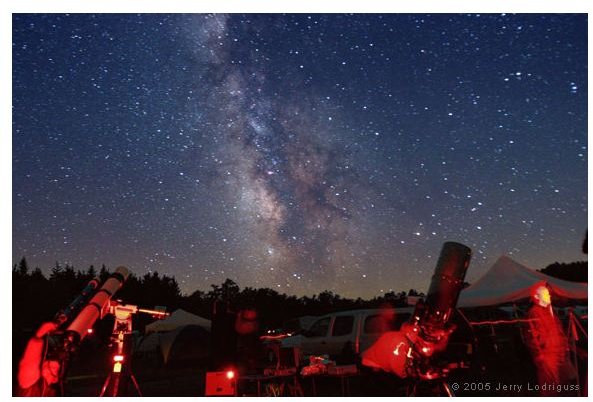Light Pollution and How it Affects the Science of Astronomy
Hiding the Night Sky
Astronomers all over the world are in search of places where they can enjoy the beauty of night sky to its fullest extent. The biggest obstacle in their path is none other than light from our bulbs and sign boards from our houses and cities. This article provides an insight into the greatest agony of astronomers, which is light pollution, and ways to reduce it.
What is Light Pollution
In ancient times, stars guided people to unfamiliar places, but today light pollution is obstructing the beautiful view of starry nights. This problem is very evident as one travels from urban area to the less illuminated rural area during the night. There are more stars visible in the rural night sky than in the urban night sky. It is not the stars which are increasing in number as one moves from urban to rural area, but it is the decreased sky glow in the rural area, which is creating this impression of an increase in number of visible stars. The image above shows the sky without light pollution and below is the image of sky affected by light pollution. As seen from these images, the Milky Way is less visible in the image below.

Causes of Light Pollution
Light pollution is the biggest menace faced by astronomers. Like all types of pollution, light pollution is man-made. With light pollution, the light from artificial sources like street lights, vehicles, buildings, airports and many other sources illuminates the sky in such a way that the faint astronomical objects like stars, shooting stars, galaxies etc, become invisible to the observers on Earth. Most of these artificial sources are poorly designed so that the light from these sources is directed toward the sky. These light rays are then scattered by the microscopic particles in the atmosphere. The air pollution has increased the density of particulate materials like dust, smoke and soot. Besides that, the air molecules and water vapor droplets are present everywhere. The scattering of light by these cause sky glow and glare, thus making it impossible to observe the faint stars with naked eye. As the sky becomes more and more illuminated, the visibility of dimmer objects in the sky like fainter stars, diffuse galaxies and nebula diminishes considerably.
In addition to the decreased visibility, light pollution is causing another problem for astronomers. Usually, astronomers rely on the spectra of astronomical objects to study their constituents, and the speed with which it is approaching or receding from our galaxy. Each line in the spectrum signifies an element present in the astronomical object under study. Hence, these spectra are powerful tools in the hands of astronomers. But, the light from artificial sources interferes with spectra**,** making it difficult to distinguish between the spectral lines by the astronomical object and those from artificial sources. These problems force astronomers to depend on more and more advanced telescopes to observe the night sky or space based instruments.
Solutions for Light Pollution:
Amateur and professional astronomers around the world are trying to create awareness among the masses about the need to reduce light pollution, which even causes health related problems in humans and animals. The use of cutoff shields will help to direct the light from artificial sources away from the sky. The International Dark-Sky Association (IDA), which was formed on 1988, is conducting many programs to educate people about light pollution. Ordinary people can become part of this drive to reduce artificial night sky illumination by turning off all unwanted lights so that energy is saved, while at the same time light pollution is minimized.
Sources
Light pollution handbook, Volume 322 By Kohei Narisada, Duco Schreuder
Images:
https://www.astropix.com/HTML/H_OTHER/SATPOL1.HTM
